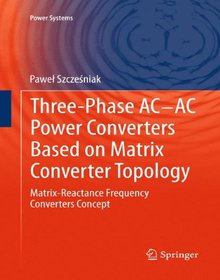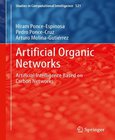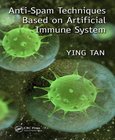Three-phase AC-AC Power Converters Based on Matrix Converter Topology
Matrix-reactance frequency converters concept

Book Details:
| Publisher: | Springer |
| Series: | Springer |
| Author: | Pawel Szczesniak |
| Edition: | 1 |
| ISBN-10: | 1447148959 |
| ISBN-13: | 9781447148951 |
| Pages: | 184 |
| Published: | Mar 20 2013 |
| Posted: | Nov 19 2014 |
| Language: | English |
| Book format: | |
| Book size: | 6.07 MB |
Book Description:
AC voltage frequency changes is one of the most important functions of solid state power converters. The most desirable features in frequency converters are the ability to generate load voltages with arbitrary amplitude and frequency, sinusoidal currents and voltages waveforms; the possibility of providing unity power factor for any load; and, finally, a simple and compact power circuit. Over the past decades, a number of different frequency converter topologies have appeared in the literature, but only the converters with either a voltage or current DC link are commonly used in industrial applications. Improvements in power semiconductor switches over recent years have resulted in the development of many structures of AC-AC converters without DC electric energy storage. Such converters are an alternative solution for frequently recommended systems with DC energy storage and are characterized by a lower price, smaller size and longer lifetime. Most of the these topologies are based on the structure of the matrix converter. Three-Phase AC-AC Power Converters Based On Matrix Converter Topology: Matrix-reactance frequency converters concept presents a review of power frequency converters, with special attention paid to converters without DC energy storage. Particular attention is paid to nine new converters named matrix-reactance frequency converters which have been developed by the author and the team of researchers from Institute of Electrical Engineering at the University of Zielona Gra. The topologies of the presented matrix-reactance frequency converters are based on a three-phase unipolar buck-boost matrix-reactance chopper with source or load switches arranged as in a matrix converter. This kind of approach makes it possible to obtain an output voltage greater than the input one (similar to that in a matrix-reactance chopper) and a frequency conversion (similar to that in a matrix converter). Written for researchers and Ph.D. students working in the field of power electronics converters and drive systems, Three-Phase AC-AC Power Converters Based On Matrix Converter Topology: Matrix-reactance frequency converters concept will also be valuable to power electronics converter designers and users; RD centers; and readers needing industry solutions in variable speed drive systems, such as automation and aviation.
Download Link:
Related Books:
Switch-Mode Power Converters
Design and Analysis
This book introduces an innovative, highly analytical approach to symbolic, closed-form solutions for switched-mode power converter circuits. This is a highly relevant topic to power electronics students and professionals who are involved in the design and analysis of electrical power converters. The author uses extensive equations to explain how solid-state switches convert electrical voltages from one level to another, so that electronic devices (e.g., audio speakers, CD players, DVD players, etc.) can use different voltages more effectively to perform their various functions. Most existing comparable books published as recently as 2002 do not discuss closed-loop operations, nor do they provide either DC closed-loop regulation equations or AC loop ...
Artificial Organic Networks
Artificial Intelligence Based on Carbon Networks
This monograph describes the synthesis and use of biologically-inspired artificial hydrocarbon networks (AHNs) for approximation models associated with machine learning and a novel computational algorithm with which to exploit them. The reader is first introduced to various kinds of algorithms designed to deal with approximation problems and then, via some conventional ideas of organic chemistry, to the creation and characterization of artificial organic networks and AHNs in particular.The advantages of using organic networks are discussed with the rules to be followed to adapt the network to its objectives. Graph theory is used as the basis of the necessary formalism. Simulated and experimental examples of the use of fuzzy logic and genetic algorith...
Anti-Spam Techniques Based on Artificial Immune System
Email has become an indispensable communication tool in daily life. However, high volumes of spam waste resources, interfere with productivity, and present severe threats to computer system security and personal privacy. This book introduces research on anti-spam techniques based on the artificial immune system (AIS) to identify and filter spam. It provides a single source of all anti-spam models and algorithms based on the AIS that have been proposed by the author for the past decade in various journals and conferences. Inspired by the biological immune system, the AIS is an adaptive system based on theoretical immunology and observed immune functions, principles, and models for problem solving. Among the variety of anti-spam techniques, the AIS has...
2007 - 2021 © eBooks-IT.org



